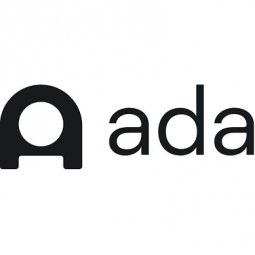下载PDF
AI-Powered Assistance Revolutionizes Customer Support for Coffee Meets Bagel
技术
- 平台即服务 (PaaS) - 应用开发平台
适用行业
- 水泥
适用功能
- 销售与市场营销
用例
- 对话机器人
- 时间敏感网络
挑战
Coffee Meets Bagel (CMB) 是一款流行的约会应用程序,随着公司的发展,在管理客户服务方面面临着重大挑战。每个月都会收到数千封新电子邮件通知单,让支持团队不堪重负,导致第一次回复的平均等待时间为 12 小时。这对客户体验产生了负面影响,因为客服人员花时间解决本来可以在没有实时支持的情况下处理的简单问题。事实证明,客户服务对人际联系的依赖是一种障碍,而不是优势。
关于客户
Coffee Meets Bagel 是一款流行的约会应用程序,专注于帮助世界各地的人们通过人际关系的质量而不是数量来寻找潜在的合作伙伴。这种对真实连接的关注帮助该应用程序不断发展,为数百万客户提供服务。然而,随着公司的发展,它在管理客户服务方面面临着挑战,支持团队每月都会被数千封新电子邮件通知单淹没。这导致客户等待时间较长,并对客户体验产生负面影响。
解决方案
为了应对这一挑战,CMB 与 Ada 的 ACX 顾问合作,在 30 天内开发并推出了人工智能助手。利用 Ada 的用户友好型平台,CMB 使用其现有内容和支持电子邮件创建了一个自定义聊天机器人,以推动客户查询。该聊天机器人只需两行代码即可部署,为 Android 和 iOS 应用程序客户提供即时 24/7 支持。该解决方案消除了时间和地理位置等障碍,导致客户咨询量显着增加。该聊天机器人与 CMB 的实时聊天软件集成,可在客户需要人工帮助时实现无缝过渡。聊天机器人的实施改变了代理的角色,使他们能够专注于主动和战略举措。
运营影响
数量效益
相关案例.

Case Study
System 800xA at Indian Cement Plants
Chettinad Cement recognized that further efficiencies could be achieved in its cement manufacturing process. It looked to investing in comprehensive operational and control technologies to manage and derive productivity and energy efficiency gains from the assets on Line 2, their second plant in India.

Case Study
Digital Transformation of Atlanta Grout & Tile: An IoT Case Study
Atlanta Grout & Tile, a Tile, Stone & Grout restoration company based in Woodstock, Georgia, was facing challenges with its traditional business model. Despite steady growth over the years, the company was falling behind the web revolution and missing out on the opportunity to tap into a new consumer base. They were using independent software from different vendors for each of their department information and workforce management. This resulted in a lot of manual work on excel and the need to export/import data between different systems. This not only increased overhead costs but also slowed down their response to clients. The company also had to prepare numerous reports manually and lacked access to customer trends for effective business decision-making.

Case Study
Revolutionizing Construction Equipment Rental: A Case Study on ProsRent and ENO8
ProsRent, a startup that won the 'Best Financial Opportunity' and 'Best Pitch' at CodeLaunch 2016, aimed to revolutionize the way construction professionals source and rent heavy equipment. In the construction industry, project managers and contractors typically rent heavy equipment from supply companies. However, predicting inventory can be challenging, and finding the required equipment at the right time and place can be a hassle. If the preferred vendor doesn't have the required equipment, it results in wasted time and money in searching for it, often leading to higher costs due to non-preferred rates and increased delivery costs if the vendor is located far from the job site. Suppliers, on the other hand, desired access to a wider base of trusted renters that they didn't have to vet themselves and wanted to offer dynamic rental pricing based on demand and availability in their market. ProsRent's challenge was to produce a minimum viable product that was fast and first to market but also strong enough to engender loyalty and repeat business from the target market.

Case Study
IoT Solution Enhances Comfort and Energy Efficiency at Apple Valley Commons Office
Apple Valley Commons, a mixed-use office complex built in 1986, was facing significant comfort and energy efficiency challenges. The building, which houses a variety of businesses, was experiencing extreme temperature imbalances, causing discomfort to employees and clients. Despite outdoor temperatures being consistently high during summers, occupants had to use space heaters to keep warm. The electricity bills from the constant operation of the heat pump were exorbitant. The building's elevator room on the roof was also overheating, reaching temperatures of 130 to 140 degrees, causing the elevator equipment to shut down. The building's existing controls solution did not provide a front end for diagnostics or remote control. The building management was seeking a solution that could address these temperature issues, improve occupant comfort, reduce operational costs, and increase building visibility.

Case Study
Revamping EE's Legacy ERP: A Case Study on BT's Strategic Transformation
EE, even after its merger with BT, was operating its ERP estate on legacy infrastructure, hosted on the premises of a third-party supplier. This outdated system resulted in a volume-based operational model, higher time to market, longer delivery cycles, and unsatisfactory customer experience. BT recognized the need for a strategic transformation of these aging ERP systems and sought a partner who could proactively manage application services. The partner was also expected to handle development requirements associated with application management services, drive accountability, and ownership with a time and target-driven transformation of these services. BT's primary goals were to improve customer experience, reduce cycle time, and measure these improvements with precision.






